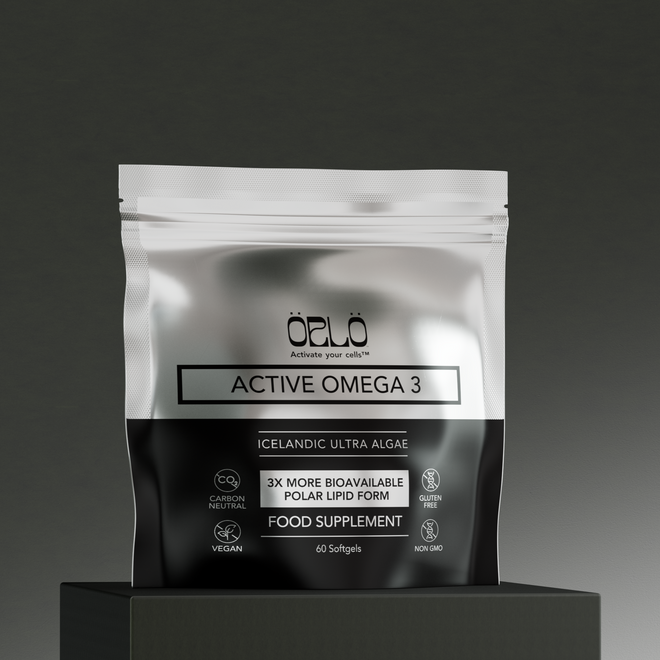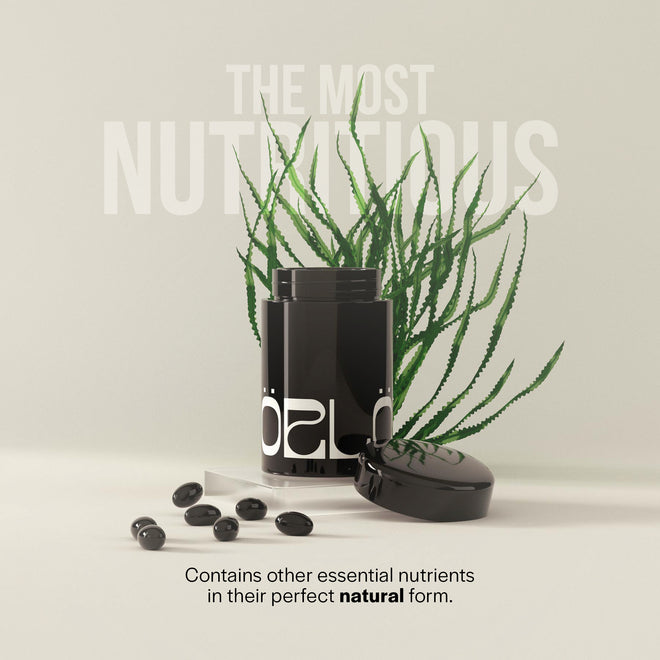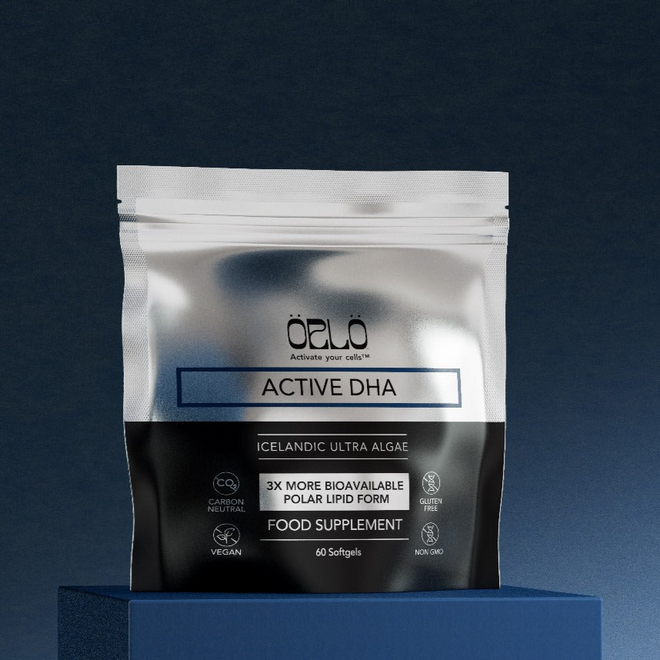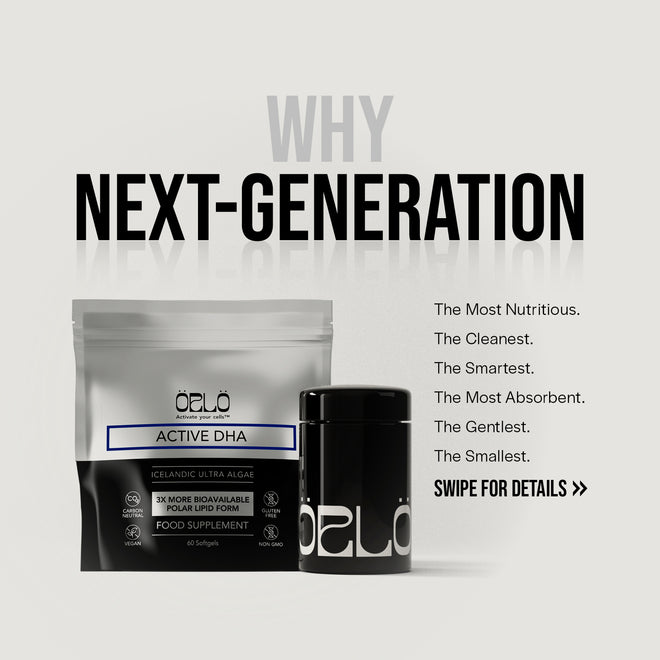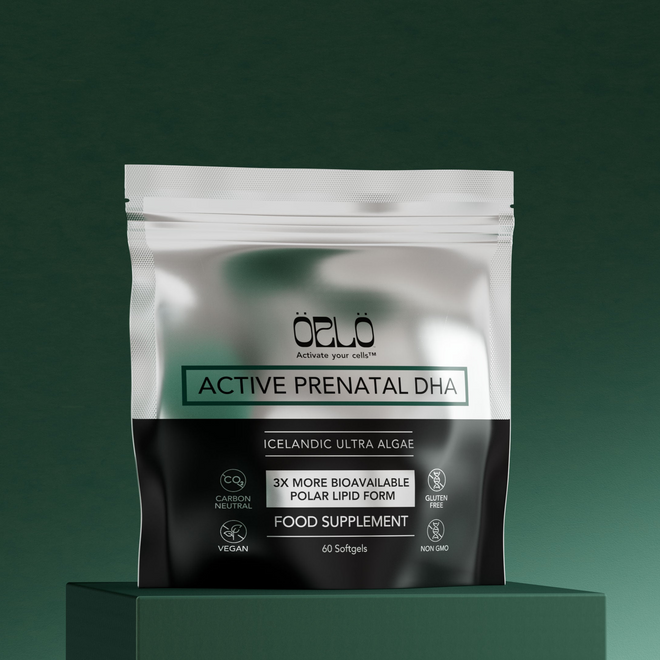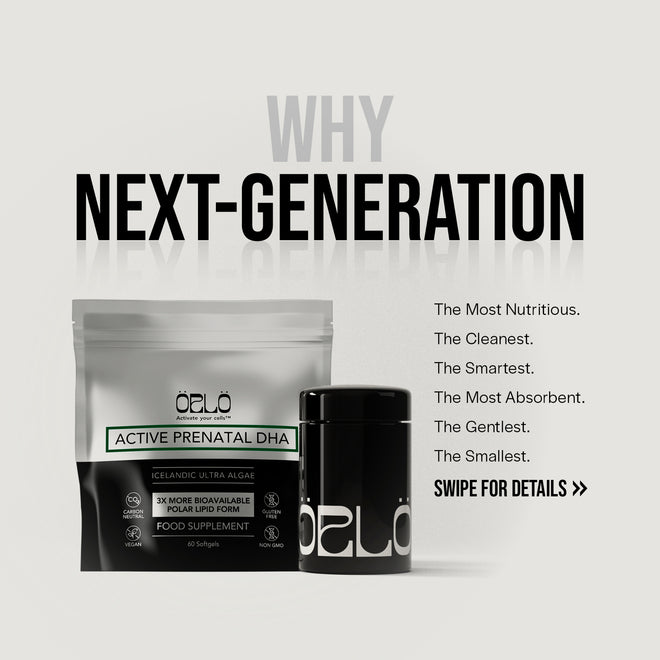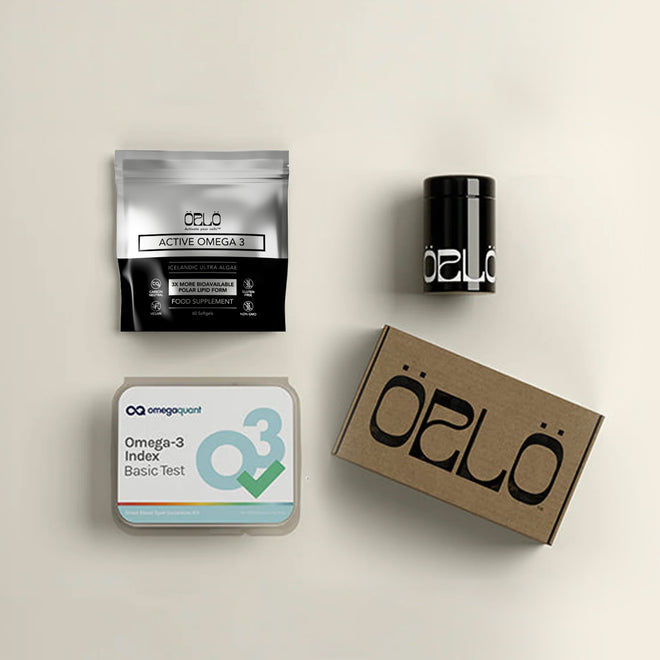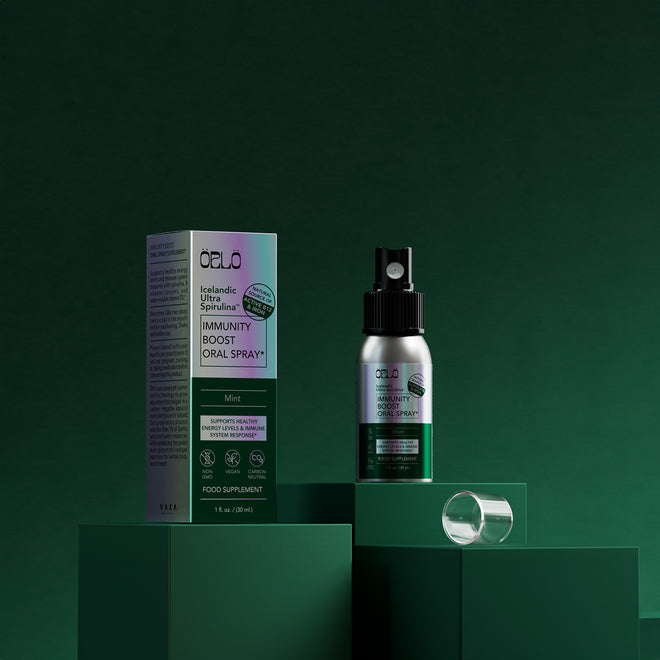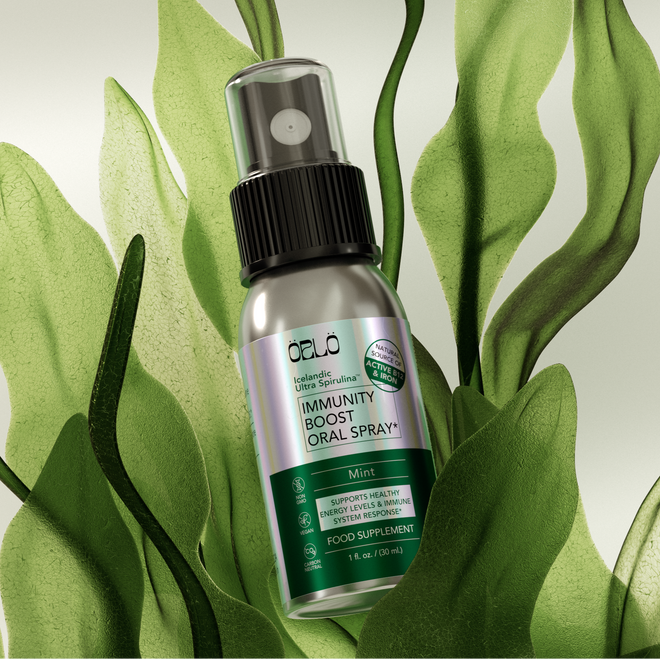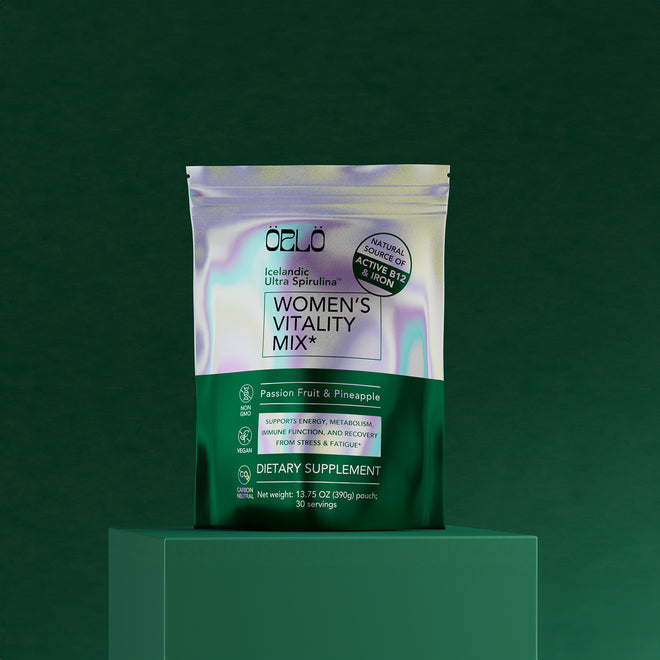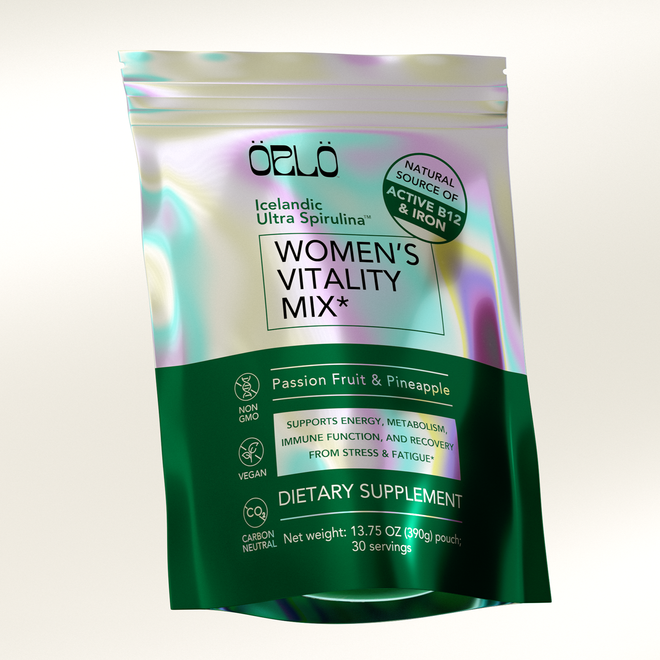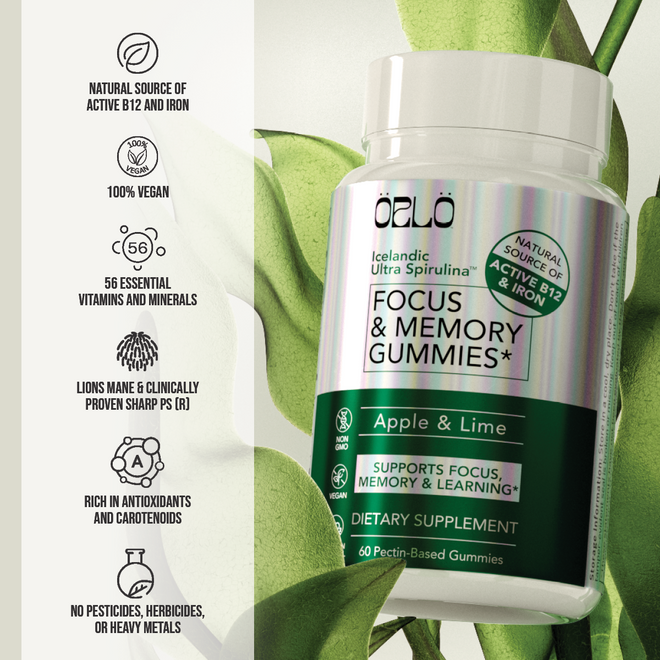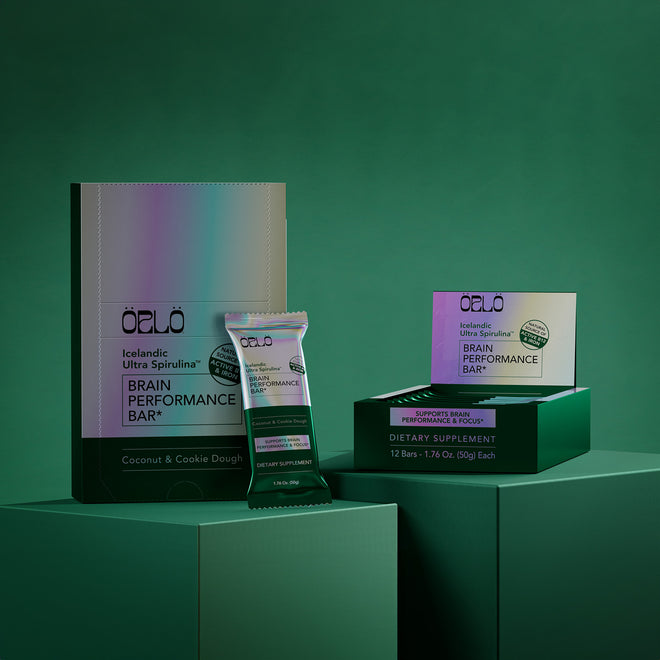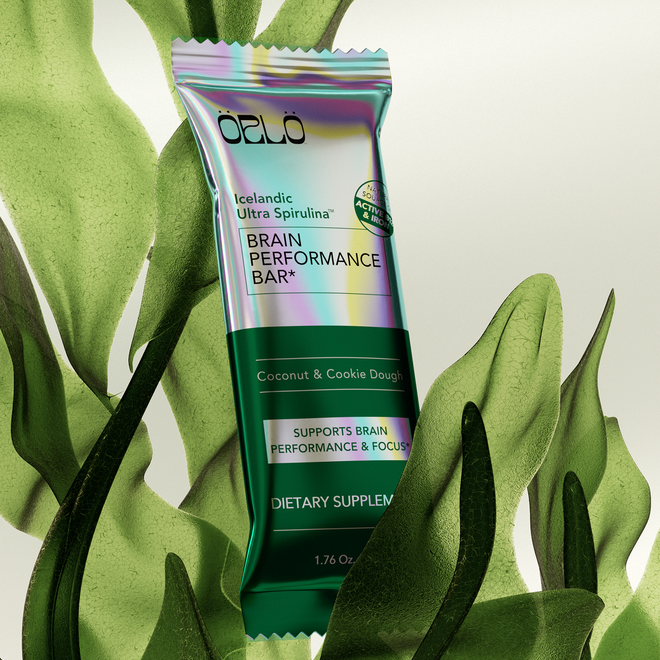25% Off - use code: HOLIDAYS
Culinary Medicine: Empowering People Through Food With Sabrina Falquier, MD, Host of Doctors+ Premium Podcast, And Founder of Sensations Salud
Watch the episode here
We are surrounded by so many processed and ultra-processed foods that it is so easy to just grab them and make them part of our day-to-day diet. However, this does us more harm than good. It takes away what food should actually be to our lives: medicine. It should be healing and empowering. This is what Sabrina Falquier, MD believes in as she helps people improve their health using food, prepared and taken as close as possible to the way nature intended. Dr. Falquier is a board-certified internal medicine and culinary medicine physician, the founder of Sensations Salud, and the host of the Doctors+ Premium podcast. In this episode, she joins Corinna Bellizzi to discuss all about culinary medicine and how she weaves together evidence-based nutritional information with culinary arts. Follow along and gain various insights to help you take control of your health through proper nutrition.
Key takeaways from this episode
- What is culinary medicine
- How to get people to appreciate taking a variety of healthy food
- How to get people into the connection and connect with food in a different way
- Why we should move to whole foods
- Food preparation tips and tricks for the busy individual
Guest Social Links
Website: https://www.sensationssalud.com
Podcast: https://alternativefoodnetwork.com/doctors-premium-2/
Instagram: https://www.instagram.com/sensationssalud/
Facebook: https://www.facebook.com/sensationssalud
LinkedIn: https://www.linkedin.com/in/sabrinafalquier
---
Culinary Medicine: Empowering People Through Food With Sabrina Falquier, MD, Host of Doctors+ Premium Podcast, And Founder of Sensations Salud
Welcome to another episode of the show. This show is brought to you by Örlö Nutrition, the world's most sustainable and bioavailable algae-based supplements in the world. They produce omega-3s in their best-absorbed polar lipid form from pure sustainable algae that are grown at their state-of-the-art facility in Iceland. These omega-3s provide a direct source of EPA and DHA like you would typically get from fish oil. Guess why? It’s because the algae produce the EPA and DHA that the fish receive.
What's unique about this source is that it's three times better absorbed than fish oil because of its polar lipid structure. This means it's not only better for you but better for the planet and without that fishy burp. If you're ready to explore and get to know these products, I want to invite you to visit OrloNutrition.com. You can receive an extra 10% off your order by using the coupon code NWC10 at checkout. That is a site-wide discount, which can save you up to 37% off all in.
I wanted to read that before I invite our guest up because I will communicate at the star start of this that I am a bit of an omega-3 expert. If we start to talk about omega nutrition, I'll happily impart any knowledge to all of those readers. In this episode, we are going to broaden our discussion and conversation on the topic of food as medicine. I am joined by a practicing physician turned culinary medicine powerhouse, Dr. Sabrina Falquier.
Dr. Falquier is a board-certified internal medicine practitioner and a bilingual citizen of the world. Her medical career has spanned fifteen years as a primary care physician. In 2020, she founded Sensations Salud, which focuses on empowering people through nutritional knowledge and culinary literacy. Dr. Falquier is the proud host of the Doctors+ Premium podcast on Apple Podcasts. She sits on the board of two nonprofits and is a clinical professor at two universities. You might have seen and heard from her before as she appears on a variety of media, including shows like this, especially if you happen to be in the San Diego area. Dr. Sabrina Falquier, welcome to the show.
Thank you so much. I'm so happy to be here.
It’s such a pleasure. I love the fact that I got to pre-introduce you through this episode where I had Esther Garfin from the Alternative Food Network on. Our audience has heard a little bit about you, but I'd love for you to start by telling us a bit about your story. What brought you from perhaps some more traditional path of being a family medicine practitioner into something more?
It's been quite a journey. I'll start from the beginning, but I promise I won't make this too long. I was born and raised in Mexico City to Swiss and American parents. I say that because there were different languages, different cultures, different food, traditions, and different flavors that were a part of my life since I was born. I moved to the US when I was eleven. I love the sciences. Food, travel, and these pieces were a part of my life, but I felt drawn toward understanding how the body worked.
I went to college with the goal of going to medical school. I also have members in my family who are doctors and allopathic MDs, so that was the road that I knew. That was a road that felt comfortable. Fast forward, I went to medical school. I did an internal medicine residency and started working full-time as a primary care provider in an internal medicine multi-specialty group.
You said you’d been to a medical conference and had a bit of a-ha moment when we were getting to know each other a little bit before. Could you tell that story?
Fast forward, I've been married for a while. I have two children. Life is quite full and fantastic. I had the opportunity to go to a conference in Napa. It's called Healthy Kitchens, Healthy Lives. It's a collaboration between the Culinary Institute of America and the Harvard School of Public Health. The keynote speaker started talking. and I started crying, which, as one can imagine, is not usual at a medical conference.
I can picture myself as a fly on the wall. I've been to a couple of restaurants where people were schooled by the Culinary Institute of America right there in the Napa area. I can imagine how beautiful that must have been and also appreciate the difference from a typical medical conference that you might have been at before.
As we delve into this whole concept of culinary medicine or of food as medicine, before we dig into the science of it, we might want to share a brief disclaimer. Given that we are talking about health and nutrition, this show is not intended to treat, diagnose, or cure any ailments. If you have a specific health concern, you should meet with a practitioner, perhaps even Dr. Sabrina Falquier herself. As we dig into this subject, I would like for you to share with our audience what exactly culinary medicine is, how it might even be different or complementary to this concept of food as medicine, and how it ultimately empowers people to reach better health.
I love that you started with the magic word, which, to me, is empowering. It's about helping people have the tools to improve their health using food as the way to do that. There are a few different rotating definitions all with truly these two pieces. One is the combination of evidence-based nutritional information meeting the culinary arts. Another way of explaining that is by helping people understand the why. Why put the effort into eating food that is as close as possible to the way nature intended for it to be? That means in their whole form.
Once we understand the why, we’re like, “What happens if I eat that versus something that's processed or ultra-processed, and then how?” Since I understand that, taking the time and the effort to cook, grocery shop, go to the farmer's market, or wherever we get our food and know how to take those ingredients. Number one, it might be what this ingredient is, but then how to take those ingredients and make meals that are delicious. I always have to emphasize that. They're delicious and also help our body to be as healthy as it can be.
The standard American might only eat a few vegetables a month if we're talking about the variety of vegetables. They might even only eat the same basic meals every week, be it, “I have grilled chicken on this day,” or, “I might have steak on that day,” or, “I've gone mostly plant-based, but it's looking like a lot of packaged foods and dinners.”
How do you coach people or get them on a path to increasing the variety of foods that they consume and diving into foods that are also culturally relevant for them? I'm thinking specifically of a friend of mine, Diane V Capaldi. She talks about her struggle with multiple sclerosis and managing that and how she was so in love with pasta but then learns that she can never have gluten. She can never have gluten or anything that would spike her gluten in any way or she gets into this state. It is called a girdle or something where it feels like she's being strangled through her lungs. It is having to be super sensitive and then dive into, “How do I connect with my family and appreciate food within this culture while also dealing with dietary restrictions that are imposed by my health concern?”
You brought up a few different things I want to touch base on. First, going back to your last question about how food as medicine is used in that part of your first question, there is a movement. In a nutrition conference that took place, that hadn't happened for many years that we'd had that discussion as a country. The conversation about food is medicine came up a lot.
One of the topics was food prescriptions. That is where if somebody has kidney disease or in the case of your friend with multiple sclerosis, they might be working with a company or a group that prepares meals that are specific for that disease state. We see this again for people with advanced HIV or AIDS. We see it with people with renal disease where their kidneys aren't working anymore. That is something where it's pre-made food that is delivered to patients for certain disease states.
Culinary medicine is an empowering piece. A lot of it is finding out where the person's coming from. In the case of your friend, there's a very specific restriction on not being able to have pasta. It’s anything that has gluten is off the plate or the table. It’s also asking, “What does she like to eat? What are the flavor profiles that she enjoys? If she enjoys pasta, what's the sauce on it? What is the flavor? Does she like spicy like arrabbiata, or does she enjoy more creamy sauces?” It’s finding out what her palate is and then working with that to move into spaces where she can still get that comfort or deliciousness that she had from pasta in a way that no longer worsens her multiple sclerosis or causes these symptoms. That's specific.
You mentioned the standard American diet where beautiful vegetables that we see of all different colors and fruits of different colors, but a lot of people do not eat those on a regular basis. A typical is this plate with brown food on it. We have the meats or chicken that you mentioned. We have pasta or bread. There's not much of that color. That whole concept of eating the rainbow, we can take that to the next level of eating from different parts of the plant. If I'm eating root vegetables like beets, carrots, or potatoes of different colors, those are all going to give my body different nutrients. That's a different way of looking at it as well.
It is empowering people by saying, and this can be kids or adults, “Can you name two vegetables or fruits that you enjoy? Tell me about your favorite meals or favorite food memories that you have at home. Where do you tend to get your food?” I'm right there using my culinary medicine brain of saying, “This is the palate they're working with.” I also know if they have a certain disease state like diabetes. I'm thinking, “What are foods that could help this person to move in a direction where their sugars might not spike as much but continue to stay in that place where they don't feel like they're being deprived?” That’s never the goal.
You brought something up that is critical to any healthy diet. Part of the reason that fad diets don't work, generally speaking, is that we have a situation where people think that in order to be healthy, they have to limit themselves. They have to remove, reduce, or make something that's frankly less appealing, and they have to suffer through it.
It is finding those replacement foods or things that can be as enjoyable or even more so because they'll feel better. They ultimately get to a space where they feel like they're able to retain that cultural relevancy. They've got the same kind of flavors that they're used to. They're enjoying some of the same textures. While it might not be the same food, it's a food that's much better for them.
I also think it's important to note that this isn't a one-size-fits-all approach. That's part of the reason that when you start to look at these culinary approaches where you're saying, “This is the diet that will work best for you,” there's this personal end to that that can make it both more enjoyable and more sustainable. It’s where you're not, “Limit. Not eat. Deprive. Now, I'm going to throw the baby out with the bathwater. I'm going to go to the store, get a tub of Ben and Jerry's and a loaf of bread, and call it a day.”
Yes. There are a lot of studies that look at people that are excited about whatever got them into diet XYZ. People can stay on it maybe about three months max, and then there starts being this, “I feel this deprivation or this vilification.” They're on the diet or off the diet. There’s this guilt or disconnection from being social with the people around us because we can only eat certain things. That realization with even your friend who can't have gluten, there are so many grains that she can have. We're not saying you're taking out an entire part of our plate or an entire food group. We're saying these are foods that can take that space of that important food group.
It’s important to note something as simple as a food allergy. I am sensitive to broccoli. Does that mean I never dine out? No. It does mean that every time I get the vegetable dish that comes along with whatever, I always have to remember to ask, “Does it contain broccoli? Is the soup stock from broccoli?” I do some simple things like that. Depending on how much broccoli there is to it, my reaction can be as severe as I have stabbing pains in my gut and need to relieve myself by whatever means necessary to get this out as quickly as possible so that I can recover in quiet and solitude in my home.
It is not fun. I've had accidental broccoli before. Some restaurants will shave the stalks off it and use it as a garnish on salads. When I have forgotten to ask, I've sometimes been punished for that, but it doesn't mean I can't go out, enjoy food, and be with my friends and family. I've also gone through stretches where I completely removed all grains from my diet to try and assess if there were other health issues that might be related to the consumption of grains. What I found was that it was both easier than I thought it would be and also freeing.
Maybe this would be hard for people in the beginning, but I took one part of the plate and said, “I can eat everything else. I can eat all the vegetables and all the spices except for broccoli. I can eat any of the lean proteins that I want, but I can't have this.” Even framing it or positioning it a little differently helped me to handle that.
When I went out to dine, it was no big deal. It started to feel like it was, “I'm doing grain-free for a while.” That's all I would say to people. I don't have to go into the explanation of I'm doing an elimination diet to see if there's another food allergy or whatever. It didn't matter. I was like, “I'm grain-free.” Plus, that's becoming more popular.
More people are trying to move into this whole foods plant-based diet where they have more sustenance coming from the rainbow. They’re getting more green leafy vegetables. They’re trying different vegetables and fruits that they might not otherwise have had and being more culinarily creative through even some things like meal plans or subscribing to HelloFresh. There is Blue Apron and something with a carrot. There are all these different brands that you can connect with. Are there any particular services that you like or that help you get people to get into the kitchen and connect with food in a different way?
I feel like I have to preface this with, “This is not sponsored by.”
Not sponsored by, but your preference. Who do you like?
This goes back to personalizing it. I'm asking patients or clients where they are usually getting their food. If somebody loves already going to the farmer's market, then it is getting perhaps a CSA box where you have a box of vegetables delivered to you. Some people don't like the idea of a box delivered with vegetables because they don't know what half the things are.
Also, does someone have the financial means to get something like Blue Apron or HelloFresh? All of those companies are pretty much the same idea. There are certain recipes that people might gravitate more towards. That's what I encourage. If people feel financially that this is where they're at and it helps to not have to think about going to the grocery store and getting a teaspoon of soy sauce or having all these ingredients that then you might not use again, this is a great way to explore recipes where somebody else has already done a bulk of the work by getting the appropriate ingredients at the right amount into your home.
They've kitted it for you. They’ve done the shopping for you, most of it. There are a couple of methods that I've used with my kids to help get them involved. I wanted to see if this could be an idea fodder for you to share something from your experience too. When I take them shopping with me, I tend to give them both one thing to do. That is, “When we go through the produce aisle, I want you to choose something that you've never tried before or that you want to cook with. We will buy stuff to make a recipe around that.” We start there, and then it makes the rest of the shopping tour an adventure.
This has worked well for my older child and a little less well for my younger child, even from the same age point. If I was to go back in time to when my older child was five, he was more into it. It caused him, the first time I did it, to grab a Buddha's hand. I had never cooked with a Buddha's hand, so I looked at this thing that looks a bit like a squid or octopus swimming through water. I knew automatically it was citrus because it has the rind of a lemon, but it's different. I didn't quite know how to use it. I ended up on my phone in the store going, “What recipes can I make with Buddha’s hand?”
What we ended up making was a Szechuan-style stir fry. We incorporated some of the zest from it and juice that I also incorporated into a beverage I made for them. We had fun with it and explored it. By taking this method, I don't run into some of the same difficulties that I see my friends have with getting their kids to try new foods because they're involved in the kitchen. My five-year-old is still a little bit pickier on the eating side. He also happens to be on the spectrum. The two are probably related, but he's a lot more adventurous than many other kids I know that are his age. It's a creative tool I use, and I wonder if you have more.
Those are great. You're using right there that empowerment piece. You're giving them a choice. You're showing them that there's so much. Especially as children, so many decisions are made by us. We’re like, “Eat this. Eat this now. You're going to go to school now. You're going to get picked up. You're going to go to XYZ activity.”
Here's a situation where you're bringing in a choice. You're bringing in empowerment. You’re also creating this space where you're listening and saying, “We could do this together.” I applaud you for that. There is one that I use with my kids. They’re both teenagers, but this was in the very beginning when they could do basic math. There are often conversations about, “Why can't we get the cereal? Why can't we do the sugary cereal?” There are those pieces of it.
It is teaching them a simple tool to figure out which cereals “fit” the criteria and looking at the back of the cereal box. That’s because the front of a cereal box is going to be an advertisement. It will say it is full of essential vitamins or uses a whole grain. It's an advertisement, but on the back, on the nutritional label, they have to give you the facts. What you're looking for is cereal where the grams of protein plus the grams of fiber are more than the grams of sugar.
Looking for a cereal where the grams of protein plus the grams of fiber are more than the grams of sugar.
There are not many kinds of cereal that fit that criterion. When my kids would go, I knew they'd be in that cereal aisle sometimes for up to 30 minutes. They wanted to find which cereals they could get, and ultimately, it was a few. I could feel comfortable like, “This is a cereal that you could have.” It’s not that cereal's the best breakfast on a day-to-day, but I felt much more comfortable that they're getting some nutrients in their body.
It was very interesting because, for example, regular Cheerios fit that criterion, but if you have high-protein Cheerios, the protein they must put in must have a flavor that's bland or another flavor. They add more sugar to make up for whatever flavor the protein must come in. That one does not fit the criteria even though you would think so from the front of the box. Your older child might be ready for that adventure in the cereal aisle.
I've managed to keep cereals out of our morning routine, and I'm going to keep it that way.
That is even better.
We make them a protein-oriented breakfast in the morning. We also give them things crunchy vegetables, and they like them. For instance, my five-year-old wanted a mini bell pepper for each hand. We had a yellow one and a red one. He was munching on them. I'm like, “This is a great start.” Once he’s had those, he's less picky about the thing I put on his plate next.
These are tools for parents out there. They have a free range of our crisper drawer. They can always grab anything from there. That's the rule I have in my household. Generally speaking, we’re like, “Don't grab for prepared foods, first off.” They have to ask. Perhaps I'm a little militant on that, but I want to give them the foundation first.
That's huge. The other part, to go along with your five-year-old, is that sense of making the kitchen part of the family activities age appropriate. Maybe a child can rip lettuce. You're not putting any tool in their hand. Manual dexterity might not be there yet. Attention spans can be in different places, but that's thinking about what they can do.
They’re also using scissors to trim string beans, for example. It’s using different ways to get people involved. If they don't want to touch the food, have them do their homework on the kitchen counter while the person who's cooking is cooking. That is so they get the smells. You might speak out loud saying, “I'm using paprika for this dish.” The curiosity could sometimes take a while, but usually, it comes pretty quickly saying, “Can I taste that? Is that one spicy? It's red, so I'm assuming it's spicy.”
It is the conversations that come about instead of the sense of one person is isolated in the kitchen preparing the food joyfully or not, and the rest of the household is somewhere else. They’re either on devices or relaxing while someone feels like they're doing this chore. We want to get back to that place of pleasure and the kitchen being a center of the community.

I love that. You have me thinking about a couple of things. One is we touched on this whole idea of cultural relevancy. I like exploring different methods of making food and different cultures of food around the world because I love food. When I was in high school, one of my good friends was from Korea. Her family was from Korea. I was invited into their home. When they were making mealtime prep, they used scissors to cut almost everything. The scissors were the preferred cutting implement. From that point forward, I never understood why people would chop scallions with a knife, for instance. Cutting it right over the soup or whatever I'm making is quite easy.
I also started to gravitate towards wooden implements and even using chopsticks to stir things like a stir fry. It works so well. If you wanted to test how well-cooked something was so that it wasn't getting too mushy, you squeeze it with the chopsticks. It would tell you from that biofeedback in a way. Using implements from other styles of cooking can also be an interesting way to explore the kitchen and explore different ways of cooking. I wanted to get to health outcomes, but if you have something else to add, please do.
I want to add I thought about where you were going with that. I have a globe. There's a family who would spin the globe and point to a place. They would have to see what country it was and create a meal around that. It would be this learning what the flavors are, what spices, and what herbs might be used and learning more about a place that might be different from something they were familiar with. It is another great way of talking about geography and talking about how we don't all eat the same and don't all speak the same language. Often, it's food that can bring us more united. That's another tidbit. I love what you're saying with that sensory of the doneness with the chopsticks. Thank you for sharing that story.
We all don't speak the same language; often, it's food that can bring us more united.
It’s interesting because we all live in a bit of a multicultural world. If you think about how connected we are on a global scale and if we lean into that a little bit, we can inspire curiosity not only in ourselves but of our kids. I have the added benefit of my older son. He's in martial arts courses. It's a Korean school, so he's already automatically interested. He's counting for me in Korean and asking me if I know how to count to twenty in Korean. I'm like, “Do you want to do that again?” It then connects to, “Did you know that in Korea, they like to use scissors for cutting common vegetables in your kitchen and things like that?” It is perhaps not the carrots and the more coarse vegetables but for simple things. They're used a lot in the kitchen.
My older son loves using kitchen shears. My younger son is a little too young for that yet. I'm afraid he might slice the finger a little bit too deep and need an emergency room visit. Overall, it's neat to see them get inspired and become a part of it. I want to hear from you because you've been in practice for many years. You've found this company, Sensations Salud. Talk about that and perhaps some of the outcomes that you see that are health-oriented, and your clients and your patients when you get involved with culinary medicine.
One of the guests that we had in the Doctors+ Premium wrote a cookbook on an anti-inflammatory diet for families. What I love about all the co-authors is that each of them brought in different cultural foods. It was about six co-authors. It's this beautiful mélange where they give you the freedom of exploring and not feel like you have to stick if you’re making a Korean dish, a Mexican dish, or otherwise that you have to stick within the lines. Maybe you use a vegetable that's normally used in Korean in a Mexican dish. You’re loosening up and letting yourself explore that. That was a great conversation. She's a pediatric endocrinologist and a co-author of this book.
There are a few pieces that I love about culinary medicine. One is all these conversations we've been having about figuring out what is the person's why and the inspiration for taking the time to turn to food and have more time in the kitchen which is commonplace in the US. One of the groups where I've done this is a nonprofit. It’s near the Mexican border in National City. The nonprofit is Olivewood Gardens and Learning Center.
There is a group of women called the Kitchenistas who became kitchenistas after they’ve gone through this eight-week program called Cooking for Salud. We had a grant that was through a local university and looked at the objective numbers. This is nationwide or even worldwide in culinary medicine. We're looking at whether there is a change in behavior. Does somebody feel more comfortable going to the store, picking produce, and knowing what to do with it? The other part is if they're doing these things, are they having improvement in their blood pressure, diabetes numbers, or cholesterol?
We were able to study the outcomes and saw that there was a statistically significant reduction in their lipid levels and their hemoglobin A1C. Their cholesterol and diabetes got better. We’d already had a lot of information on behavior change, but we finally had black-and-white objective information that showed improvement statistically. That was exciting.
Do you think this is partially due to increased consumption of things like dietary fiber, prebiotics, or probiotics? What are the things that are making this work? Is it eating that rainbow, or is it moving away from processed foods? You have 1 or 2 things to say about that, I'm sure.
I have a lot more than two things to say, but I will try to keep it to two. It's both, moving towards whole foods. Those are foods close to nature. The way we often use the Harvard Healthy Eating Plate, which is when we look at the government plate, MyPlate.gov, it's that, but only the science without the big industries like the dairy industry or the meat industry getting in there. The bottom line is trying to fill half your plate with fruits and vegetables, whatever combination thereof.
There are some entities that feel it should be a little bit more vegetables and fruits, but it is fruits and vegetables half your plate, 1 quarter whole grain, and 1 quarter well thought-out protein. That means it could be plant-based protein like beans. It could be chicken. It could be fish. Also, hydrating mainly with water, black coffee, or black tea, if you drink those, and then also getting regular exercise. That's what it comes down to. If you think of it, someone is used to eating a giant steak that fills up the whole plate. If I am filling up half that plate with those beautiful vegetables, I've crowded out that piece of steak. It is both of what you said. What are we moving towards, and what are we leaving behind?
It's so important to think about this because when people are consuming vegetables and fruits, especially in their raw state, they take a little longer to chew. This also means that your brain has time to catch up with your stomach and say, “I'm full now,” as opposed to overeating this super calorie-dense, perhaps fat-laden, piece of steak.
You're giving your body signals. With fruits and vegetables come all sorts of fibers that feed the good bacteria in your gut. All of this works together to enable you to reach your best health. A lot of people have gone grain-free, and this is the overall problem I have with the plate from the government saying a quarter of it is whole grains. If there was a replacement for whole grains, what would you put there?
I would not take away the whole grains. Truthfully, I feel like there's so much variety from fully 100% gluten-free to ones that are more whole wheat products. There are so many different options. There are a lot of ancient greens that we can go back to. I say back to because they used to be in societies all over the place. For a while, they started coming back, but you can only get them at specialty food stores. The price point was quite high, but they're starting to be much more available. You mentioned that broccoli doesn't work for you, but others sound like other cruciferous vegetables, too, like cauliflower otherwise.
We eat a lot of Brussels sprouts.
They are so good. Roasted Brussels sprouts have taken the place of ultra-boiled Brussels sprouts. It’s that sense of, “If grain A doesn't work for me, let me explore.” For example, teff, which is used to make injera. It is used in Ethiopian food. It is almost their bread where that's used. You make teff porridge for the morning. There are over three dozen grains that I can think of right off the top of my head. There are some that people tolerate more than others.
As an earlier episode of this show, we brought on Caryl Levine and Ken Lee who are the Founders of Lotus Foods. They wrote a book and cookbook called Rice is Life. That particular type of grain doesn't tend to be allergenic to people. Even if they are gluten sensitive, or in my case, I did an Everlywell food sensitivity test and learned that I have no issue with gluten, it is not gluten, but there are other proteins and other grains. It included buckwheat and all these others. I'm like, “What?”
Thankfully, rice is still a good option for me. I can do pure wheat and oat, but I'm pretty much left with what I know are okay. With rice, I like black rice, forbidden rice, wild rice, and then also oat. I get a non-GMO oat. I make my own oat powder to cook with sometimes, like flour. It is very easy. You get the rolled oats that are non-GMO, put them in the Vitamix for a minute or so, and I've got flour. It's simple. I have the rice. I have the oat. I do use some wheat.
You mentioned a perfect example where you have some sensitivities, but you were able to carve out which foods that can be a part of that quadrant. I also love that you brought up that rice comes in many different colors. Red rice is one of my favorites if I still wanted to sop the sauce and forbidden rice. Those are two of my absolute favorites.
I love it so much. It's got this nice nutty finish to it. I'll add it to soup stocks. I do all sorts of things with that. If there's a little bit extra made, I'm like, “What else do I get to make with this?” Also, as we get into the kitchen and get inspired, we can find new ways to connect with food and recipes that we can make from the leftovers or the previous recipe.
I made a stew with my older son. I had black-eyed peas that have been sitting in my pantry for a long time. I decided I was going to get them ready and figure out what I was going to make with them later. I liked the way they looked, so when my son saw these peas with little black eyes on them, he was like, “What are we going to do with this?” I'm like, “We have this pre-packaged Indian stew package that was nicely made.” It didn't have a lot of bad ingredients in it but ultimately was probably too flavorful for my younger child. I'm like, “What if we combine this with the black-eyed peas and some vegetable stock so it gives it more flavor, and then choose some vegetables?”
I always go to the crisper drawer. Invariably, I've got some celery that is getting rubbery and some carrots are getting floppy. I cut those up and throw those in. They still make fantastic nutritious foods in this soup form. Nobody cares that it's not that crisp crunch that it was 3 or 4 days before. I encourage people, especially in the season, to think about stews and soups because they can be fun and easy. They can feed you dinners for a couple of days. They can also be repurposed if you make a thick soup. Sometimes, I will end up putting it as a salad topper and have it cold. Those are different things that you can do in the kitchen.
I love the creativity that you have. That means that sense of how can we translate this or transition a dish to cater to more family members or repurpose it. Soups are also a great way if you have kids that aren't into as many vegetables. Often, mirepoix, which is a combination of carrots, celery, and onions makes a great base for so many different dishes. Once they're cooked, texturally, one is not aware that you're having all these vegetables. I'm not saying you're trying to sneak this into your kid's palate, but it is a great way. You can be at whatever stage it is. It's a great way for adults, too, to add yet more variety and flavor building to your dishes.
That is fantastic. As we prepare to transition and get ready for the last ten minutes of this show, I wonder if you have any quick tips and tricks to saving time in the kitchen and food prep to help people stay engaged in the kitchen, even if it's a weekday and they've got a busy schedule.
Batch cooking is a big one. Usually, on the weekends, if there's a day that we're home and doing life at home, I'll turn on my oven, and I encourage you to do this to at about 400 degrees, and roast trays of vegetables. When you roast, you want to make sure it's a single layer. Drizzle your oil of choice. I usually do either olive oil or avocado oil, a tiny bit of salt, and that's it. You toss it with your hands right in the pan and do a few trays of that because then, you are being your own sous chef. If you do eat meat products, you can also do some roasted protein of your choice. I'll also cook 1 or 2 whole grains on the stovetop. Those are the ones I can think of at this present time.
Essentially, you prepare. That evening for dinner, we might have some of those roasted vegetables right out of the oven as part of our dish. The next morning, I could heat those and put an egg on top, and that's our breakfast where we're getting a lot of vegetables. That next evening, I could blend them with my favorite broth. It could be homemade broth or store-bought if we can't imagine making our own broth. We now have soup. Out of 1 roasting event, you already have 3 meals that came out of that.
I find that more enticing than making the same thing. I make a huge pot of soup. If I do that, I usually freeze the extras because by day four, if you're taking out the same soup and ladling again, we get bored of it. Some people can start disliking it, like, “We have to have that soup yet again.” This is a way to use the same ingredients. The part that takes a lot of time, like cooking a whole grain can take longer. For example, if we're doing that forbidden rice compared to white rice, it is going to take 2 to 3 times as long to cook. I'm doing it on a day when we're around the house. You come home on a weekday when things are crazier, and within 15 to 20 minutes, you could have a delicious meal on the table. It's less time to reheat that meal than it is to sit in line at a drive-through to get food.
You have me thinking of one of my favorite breakfast dishes to cook. It is also one of those things that is a little tedious because you have to first blacken the peppers and then peel the blackened edge of the peppers. You have to let them cool first enough to do that. This could be a dish that takes 2 to 3 hours to make if you're doing it all in one soup. It is called a piperade. It's a French dish. It is egg-based. In France, they'll eat omelets for dinner. It's a little different than we are here.
A piperade, think of it like a frittata a bit, but a French take on that. You would go ahead and roast some vegetables before, do things like prepare the peppers by blackening them, and then peel them so you've got this nice, easy-to-put into a casserole. You then make the egg casserole in an iron dish or pot. You're putting that into the oven to cook for 30 minutes. It ends up being like a frittata, but a French take. It may be a little bit more cream-based if you use dairy. It’s delicious. I encourage people to look up recipes for piperade if they eat eggs. It is divine, all of them, every single one I've ever tried. I've made a few.
I'm drooling over here. That sounds delicious. It's funny you mentioned the eggs because when my kids were little, we would do eggs a lot for dinner. With two working parents, it was so fast. One day, we had brunch or breakfast and there were eggs served. It's like, “People have eggs for breakfast?” I realized as a household, it wasn't what we normally had for breakfast. It was amusing.
As a doctor and as someone who treats people, are there common deficiencies that you see in individuals or things that you might turn to supplements for or encourage people to take a specific supplement even with a healthy diet?
There is a quote that Michael Pollan says. It’s that eat as if you take supplements. What I mean by that is most people who take supplements are people who are already conscious about what they're bringing to their bodies. You don't usually have somebody who's going through three drive-throughs a day and then comes home and takes supplements.

If one is eating the rainbow, eating from different parts of the plant, or eating that well-rounded plate as we discussed, if you're fully plant-based, B12 is something that you should take as a supplement. Vitamin D is the other common one that comes up a lot. I know omega-3s are the third. If I were to recommend three vitamins, those would be the three that I would recommend to round out a well-balanced diet.
Thankfully, I have all of those covered in Örlö Nutrition. If you guys are curious to learn more, you can visit OrloNutrition.com. Use that coupon code NWC10 for an extra 10% off at checkout. With something like vitamin B12, I don't think people understand the reason that it's hard to get enough of that as a vegan or vegetarian. Why is it that they aren't getting enough if they're being so mindful of the things that they're eating, having a lot of fresh fruits and vegetables, and working to get the right proteins and everything else?
If we were having this conversation many years ago, we would, even if we were fully plant-based, be getting enough B12. A lot of it comes back to the soil health of our lands. We can get B12 from animal flesh, beef especially. It is hard to get enough through plant-based eating because of that. When I say this, I want to preempt that it is still better for you to eat fruits, vegetables, and otherwise. I'm not saying not to, but those are certain supplements that are necessary if you're not eating any animals.
I know that this may be hard for people to absorb and understand, but I read some research years ago that showed that spinach, for example, had something like 17% of the iron that it had in it at our grandparents' age. It was because the soil has been depleted of a lot of the micronutrients. We might add the standard nitrogen, phosphorus, and potassium to our soils as an augmentation to help the vegetation grow, but because we farm the same land over and over, these micronutrients become more of the problem. Animals bioaccumulate them. That's where we go to them.
It’s interesting. This is something that's coming up with Örlö. The spirulina we're growing, because we're growing it the way we're growing it, produces vitamin B12 in the methylcobalamin form. Interestingly, spirulina grown in open ponds doesn't. We're still trying to get to the bottom of why this occurs, but it means that the immunity boost, for instance, that we produce with our spirulina has vitamin B12 in the methylcobalamin form. We've added another smattering of B vitamins to balance it and also included vitamin D3 cholecalciferol. It is a great immune-boosting formula. I take it every day.
There are a few things that I supplement with and like to share with the audience. I'm of your mind too. I fill the gaps and find where there are gaps. I also happen to be of the APOE 3 genome type. I have one representation. Partially, because of that, I pay extra attention to things that help and support brain health.
I also look to things like CoQ10 because where I have a potential miss is where I'm going to take a supplement. Look for those and take a test. You can take an omega-3 test. You can take a vitamin D3 test. I'm not sure with the B vitamins if they tend to run those in panels or not, but you'd probably be even more aware.
It's interesting that you say that because I've tested more of the B12, the water-soluble B vitamin. Those we don't routinely test for, but B12 is something that, especially if somebody tells me they're fully plant-based, I test for that. I encourage someone to take it, but we also want to make sure that they're absorbing it. I want to see whether they need to take more and be aware of that. I'm curious about your supplements. If the B vitamin B12 supplements go into your stomach, you don't absorb them as well. I realize with your supplement, how's it taken?
The Immunity Boost is an oral spray. The directions we had to make on it because of legal requirements are to spray into the mouth before swallowing. It's how legal teams tell you you have to do it. If you say something like it's sublingual, then that becomes a drug treatment. That's common vernacular used for drugs, and this is not a drug. It's a supplement. In the mouth, things tend to be more absorbable of certain nutrients. That's even true of omega-3s. Some of the digestion can happen that begins in the mouth. However, because the omega-3s that Örlö has are in the polar lipid form, it doesn't matter because your absorption is so good of polar lipids. They get right into your system. It is interesting.
I love that you're counseling people on the sublingual piece. Years ago, I worked with another company that had a little tablet that you were counseled to dissolve in the mouth. You could chew it, too, if you wanted. It's not the best-tasting thing, generally speaking, because vitamin B12 has such a strong taste to it. The Immunity Boost is innocuous. It’s a little sweet. It has a slightly nutty flavor that comes from the B vitamins, which is common.
Also, you mentioned that for legalese, you have to say certain wording. The truth is you want people to understand. Sublingual may be too medical jargon. People understand, “I spray this in my mouth exactly here, and this is what's going to help.” When I was in medical school, we'd learn situations where they said they were taking a medicine, and then in the office, you would ask them to show you how they were taking a medicine.
It was so interesting. It was such a visual of realizing that you may be communicating something, but they're hearing something completely different. As you do with saying, “Spray it,” it may be for legal reasons that you have to say it, but it gets the point across of exactly how you want people to take what they’re paying for. You want people to get the benefits.

I've seen DHEA creams, for instance, to help with anti-aging, weight loss, and all sorts of things. They want you to rub it on your inner arm or belly where apparently, it absorbs a little bit better. They'll say the same thing to men who are getting testosterone treatment and getting testosterone creams to rub on their bodies. Sometimes, they're transferring the testosterone to their partners, and then their partners are getting symptoms of having too much testosterone in their systems because they're not on that medication or meaning to be on the medication. Sometimes, doctors have had to dive through some of this. I learned about this first by listening to Dr. Shawn Tassone’s podcast, and then I had him come on this show. He's got this podcast called Confessions of a Male Gynecologist.
I can only imagine.
It is a good show. I encourage you to take a listen to that. It’s interesting to see how people integrate the nutrition advice that they get or even when they're given a drug that they need to take for a specific period of time, how poor compliance can be.
It's interesting. They talk about compliance because sometimes, with that word, a patient's non-compliant. They're not following your recommendations. That communication gap can sometimes be a part of it. Some days, they can't afford the medicine, but they don't feel comfortable telling their doctor or medical provider that exactly.
In my case, I have hypothyroidism, so I've been on Nature Throid for some time since 2009. It's something I have to take every day. I don't love to have to take anything every day, but it's something that's my prognosis in life. For years, I was taking it at the wrong time of day. I assumed that I could have my coffee with milk at the same time, but it was impeding the absorption. I was having to take a higher dose because I was getting calcium in the milk. That was affecting my absorption of the medicine.
Many times, we make assumptions as the patient. We’re like, “It’s coffee. It's no big deal.” My dosage is different because I no longer consume dairy. I'm better about taking it at least a half hour before I consume anything except for water. They didn't even want me to have lemon water in the morning with it. They were like, “It’s water for half an hour. That's your best bet,” and then my dosage came down. Compliance matters. Getting to know how your patients are following the letter of the law also matters. Sometimes, it is asking questions differently or even being willing to share as a patient, not being afraid to share.
I want to say one thing before we move on to your next question, talking about these supplements, otherwise. In one of the other episodes we did with Doctors+ Premium, we spoke to an oncologist who works in the same office as a naturopath. What I love about what they do is often people will go down one road and say, “I want to go to the naturopath road. I have cancer. I don't want to touch an oncologist.” Sometimes, it's the other one. Sometimes, the two are not telling each other that they're doing both.
What I love about this collaborative work is that you'll have a patient who is undergoing chemotherapy, otherwise working with the naturopath to see. in that scenario, the supplements, vitamin C, IV infusions, or otherwise are prescribed and tailored by the naturopath who's having direct conversations with the oncologist to make sure that there are no cross-reactions or any problems with the care that each one is giving them. That, to me, is the sweet spot of that collaborative work and a different place of naturopathic care. What you and I are talking about is rounding out our best food choices and meeting any gaps that there might be. That situation is different but another space for naturopathic work.
That is a fantastic message. I'd love to invite you to the show to share if there are any thoughts that you'd like to leave our audience with or spots that you'd like them to visit. I know you have a website, which is Sensations Salud.
I have a website. Sensations Salud came out of sensations. It’s waking up your senses around everything around food and where you get it if you can picture the face of the person who grew the food, if you go to the farmer's market, or if you're getting grapes and you picture the heat that might have been on those grapes when they were growing and becoming plump. It is all the way to the senses when you're in the kitchen and who you're surrounding yourself with when you're eating those foods that you created.
Salud in Spanish means health, but it also means cheers. It’s the sense of cheering our lives and enjoying life. That's why I always focus on delicious food that happens to be good for you. It is one of my biggest pieces. I'm on social media. It’s @SensationsSalud. You can find our Doctors+ Premium on Apple Podcasts. The website is SensationsSalud.com.
I understand, too, that there are some sample episodes available for those who have not yet subscribed because the premium podcast is a membership podcast, correct?
Yes, correct. Doctors+ goes back several years. There are several podcasts that are free. When I became the host of Doctors+ Premium, there are some free welcome aboard podcasts. You can also subscribe and have a certain number of days to see if the information's calling you. The focus is evidence-based information, either with allopathic MDs or traditionally-trained MDs. We're starting to have some conversations with some PhDs as well. It's always with the focus that food can have a big role. I’m not saying that it substitutes the medical road that you're on with your medical home, but that food can play a big role. I always include a delicious recipe that goes along with the conversation that we've had with our experts.
Food can play a big role in health.
I hope that you'll share a delicious recipe with this audience so they can go to that as well.
Thank you so much. This was wonderful. Do you want a recipe now?
Maybe we can give a preview. Is it going to include the Buddhist hand or something super creative that they haven’t seen before?
You got me on the spot here. I'm going to have to think about this one. I could say anything that comes in a color or shape that is not the usual. Buddha’s hand is a perfect example where you have citrus. You described it so perfectly. I also love things like watermelon radish that looks white-greenish on the outside. It’s not very exciting. You cut into it, and it's this gorgeous crimson color. It’s beautiful. Also, even watermelon when it's yellow watermelon. There is also a purple carrot or a purple potato. Things that are different than the standard things that you can get in a grocery store can be simple recipes and incredibly inspiring.
I love that. I will also point out. I've started buying the bundle of heirloom carrots or the multicolor carrots. I've always loved parsnips, but I only like them roasted. Guess what? The white carrot tastes a little bit like a parsnip, interestingly enough. When raw, you can eat it like a carrot. It tastes a little bit like a parsnip. I love that about it. Get creative, get into the kitchen, and enjoy a great recipe. Thank you so much for joining us.
Thank you so much. I enjoyed our conversation. I appreciate the invitation.
---
What a conversation. I could keep talking to Dr. Sabrina Falquier for hours if she'd have me. I want to go ahead and make sure everyone here knows how to find her and her important work with both the podcasts and also SensationsSalud.com. If you happen to be in the San Diego area, you may be so lucky as to be able to connect with her directly and even help you on your health journey. I encourage you to visit that website and listen to that podcast.
If you've learned something, I hope that you'll subscribe to the show on your favorite platform. While you're at it, please give us a thumbs up, a five-star review, or even write us a review. This is its own currency in this world and helps important information find its way to those that need to hear it. As I close this show, I hope that you'll join me as I say my parting words. I raise a cup of my favorite beverage. It's coffee. Here's to your health.

This recipe is a powerhouse of deliciousness and health. The key is incorporating the whole orange, to keep the fiber intact. Here you get the powerhouse of Vitamin C from the oranges and passionfruit (if using and completely optional). Also, the anti-inflammatory properties of curcumin found in turmeric, with increased bioavailability thanks to the piperine in black pepper. The drizzle of honey cuts the tartness just a tad, to your liking. Perfect for winter months. A favorite in our household and loved by all ages.
Yield: 1- 3-4 cup portion
Ingredients (per person):
- 2 - 3 peeled oranges
- 1 - 2 Tbsp passion fruit puree (optional), or flesh and seeds of 1 fresh passionfruit
- 1 tsp dry turmeric powder
- 1/8 - 1/4 tsp dry ginger powder or 1/4 inch piece fresh ginger (
- 1-2 cranks freshly cracked black pepper
- 1-2 tsp honey
- 2 cups ice cubes
Method:
- place oranges at bottom of blender bowl.
- add rest of ingredients.
- top with ice.
- blend until smooth.
- ENJOY!
Important Links
- Sensations Salud
- Doctors+ Premium – Apple Podcasts
- Esther Garfin – Food as Medicine: Understanding What Plant-Based Diet Means
- Healthy Kitchens, Healthy Lives
- HelloFresh
- Blue Apron
- Olivewood Gardens and Learning Center
- MyPlate.gov
- Caryl Levine and Ken Lee – Regenerative Agriculture: Mitigating Climate Change and Yielding Quality Produce
- Rice is Life
- Dr. Shawn Tassone – The Real Truth about Hormonal Balance with Dr. Shawn Tassone, America’s Holistic Gynecologist
- Confessions of a Male Gynecologist
- @SensationsSalud – Instagram
- https://www.YouTube.com/channel/UCOZe0bOAVqDDWHHbaeh3Irw?view_as=subscriber
- https://AlternativeFoodNetwork.com/doctors-premium-2/
- https://www.Facebook.com/SensationsSalud
- https://www.LinkedIn.com/in/SabrinaFalquier
About Dr. Sabrina Falquier
 Dr. Sabrina Falquier is a board certified internal medicine and culinary medicine physician. She is bilingual and multicultural, born and raised in Mexico City to Swiss and American parents. Dr. Falquier worked as a primary care doctor for over 15 years and in 2020 founded Sensations Salud, which focuses on empowering through nutritional knowledge and culinary literacy. Dr. Falquier promotes culinary medicine throughout San Diego and internationally. She is the proud host of the Doctors+ Premium episodes on Apple Podcasts, sits on the board of 2 non-profits and is a clinical professor at two universities. Her work can be seen through the powerful documentary: The Kitchenistas. Additionally, she has been interviewed regarding food and health by multiple media outlets.
Dr. Sabrina Falquier is a board certified internal medicine and culinary medicine physician. She is bilingual and multicultural, born and raised in Mexico City to Swiss and American parents. Dr. Falquier worked as a primary care doctor for over 15 years and in 2020 founded Sensations Salud, which focuses on empowering through nutritional knowledge and culinary literacy. Dr. Falquier promotes culinary medicine throughout San Diego and internationally. She is the proud host of the Doctors+ Premium episodes on Apple Podcasts, sits on the board of 2 non-profits and is a clinical professor at two universities. Her work can be seen through the powerful documentary: The Kitchenistas. Additionally, she has been interviewed regarding food and health by multiple media outlets.
